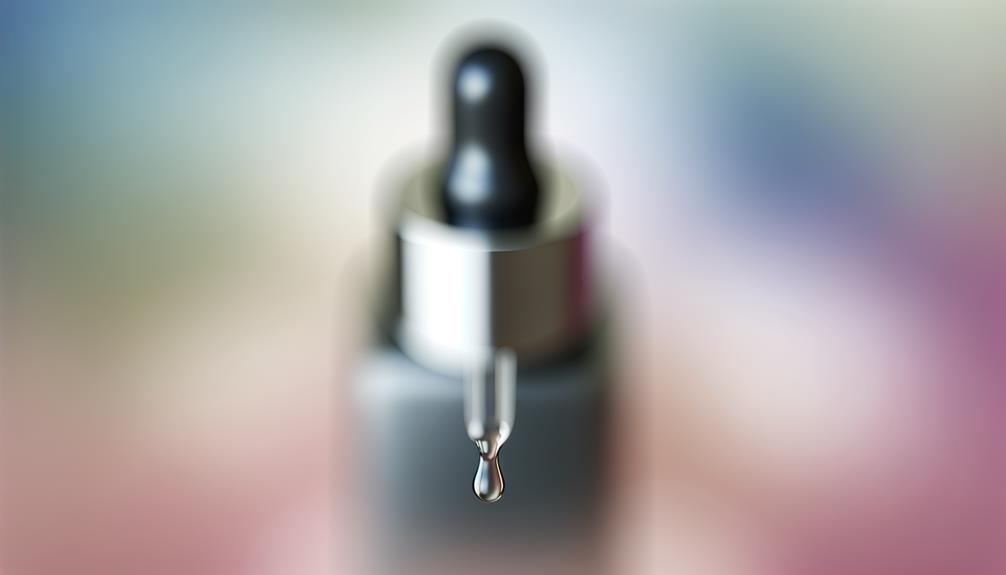
I've thoroughly examined eye droppers, focusing on their design and function. Crafted for precise liquid transfer, they utilize capillary action for control. The Precision Dropper™ Adapter, utilizing medical-grade silicone, guarantees safety and minimizes waste. However, problems like inconsistent ink flow and "burping" can affect performance. Despite a large capacity, frequent refills and risk of leakage pose challenges, especially when on-the-go. Compared to fountain pens, which provide steadier flow, eye droppers may fall short in user satisfaction. To explore more about maximizing their potential and overcoming these limitations, further details will be beneficial.
Key Takeaways
- The eye dropper tool uses capillary action for precise liquid transfer without mirrors.
- It features a medical-grade silicone adapter to reduce medicine waste and enhance cost-effectiveness.
- The eye dropper's high ink capacity is offset by ink flow challenges, affecting user experience.
- Portability issues arise due to leakage risks when carried, limiting its convenience.
- Compared to fountain pens, eyedroppers struggle with consistency and require frequent refills.
Understanding the Eye Dropper Tool
When it comes to understanding the Eye Dropper tool, let's plunge into and explore its functionality with precision. The eye dropper is engineered for transferring liquids, such as eye drops, utilizing capillary action for exact delivery.
This tool minimizes mess, guaranteeing a controlled application without reliance on mirrors. The Precision Dropper™ Adapter, crafted from medical-grade silicone, assures safety and comfort, fitting any standard eye drop bottle seamlessly.
Many users note a marked decrease in wasted medicine, highlighting its cost-effectiveness for regular eye drop users. Additionally, eye dropper systems can support high ink capacity for fountain pens.
However, challenges with ink flow may arise, affecting consistency. Understanding these aspects guarantees efficient usage, maximizing benefits while addressing potential limitations.
Key Features and Benefits
The Eye Dropper pen's design is tailored for those seeking both functionality and efficiency in their writing instruments. Its eye drop bottle system allows direct ink filling into the barrel, offering substantial ink capacity. This design minimizes leakage risks and prevents burping by utilizing a smaller ink chamber.
An ebonite feed, paired with section modifications, guarantees consistent ink flow, enhancing user-friendliness for fountain pen enthusiasts. The ebonite material, with its polished grain, not only boosts aesthetics but also contributes to functionality, being a superior yet underrated material choice in fountain pens.
With a compact 5.5-inch capped design and wider grip, this pen offers balance and comfort for extended writing sessions. Its No. 8 Magna Carta stainless steel nib may require tuning for peak performance.
Challenges and Limitations
Adapting to the use of an eyedropper can pose several challenges that may affect its overall functionality. Users often struggle with liquid transfer, particularly when dealing with thicker solutions. This inconsistency in application can result in varied dosing, impacting effectiveness.
Additionally, user error plays a significant role; improper technique leads to insufficient liquid transfer, frustrating those who are accustomed to traditional methods. The "burping" phenomenon is another notable issue where unexpected ink blobs occur, reducing usability and causing messes.
Furthermore, portability remains a concern. Eyedroppers are prone to leaking, risking ink spillage when carried in bags, which adds to their inconvenience.
These challenges highlight the critical need for careful adaptation to guarantee ideal performance and user satisfaction.
Comparison With Similar Tools
Considering the nuances that differentiate eyedroppers from similar tools, we notice several key contrasts that impact user experience. The eyedropper, while advantageous for its large ink capacity, often struggles with ink flow consistency, leading to "burping" and potential messes.
In contrast, a fountain pen provides a more controlled ink flow, enhancing usability and reducing spillage risks. Eyedroppers can be cumbersome, frequently requiring refills and posing portability issues—factors less problematic with compact fountain pens.
In addition, compared to precision droppers, eyedroppers present a higher risk of spillage, which can lead to wastage. This makes precision droppers preferable for tasks requiring accuracy.
Final Thoughts and Recommendations
Recognizing the challenges faced by eyedropper users, it becomes evident that these tools often fall short in practical application. The frequent inconsistency in ink flow can disrupt the writing experience, mirroring the unpredictable nature of administering eye drops.
The "burping" phenomenon leads to unexpected ink blobs, adding to user frustration. Additionally, the high ink capacity may seem advantageous, yet it results in rapid depletion, necessitating constant refills. This compromises portability and convenience.
Comparatively, fountain pens offer a more controlled ink flow and reliable performance. Given these issues, I recommend considering alternative writing instruments that guarantee a smoother, mess-free experience.
Investing in tools with predictable ink flow and ease of use enhances the overall writing process, minimizing interruptions and maximizing satisfaction.
